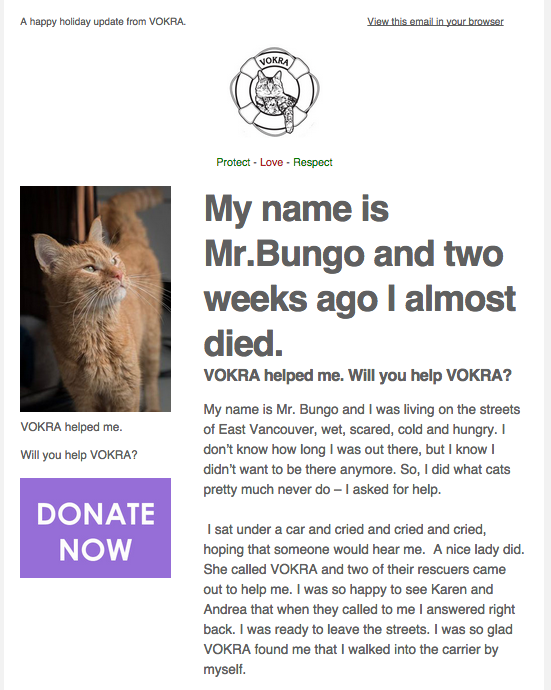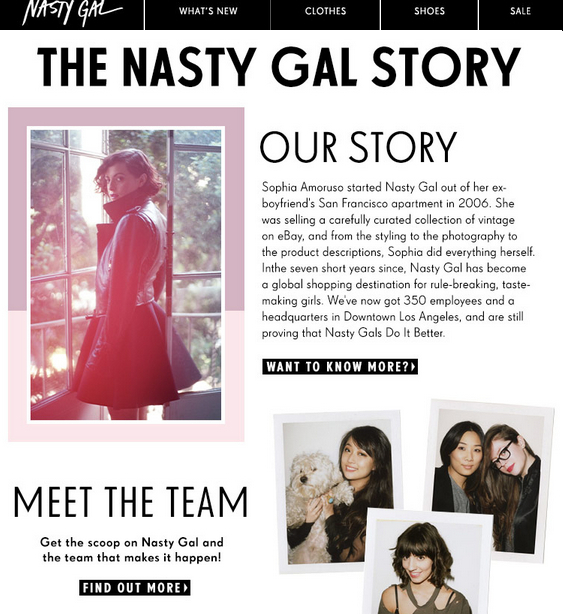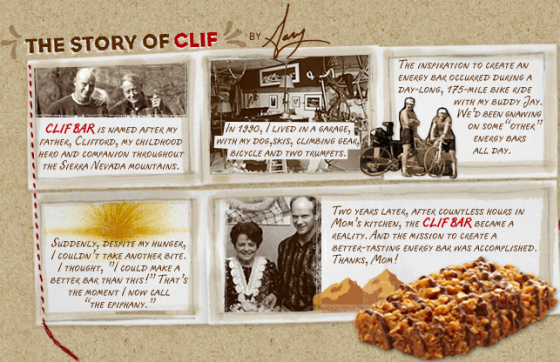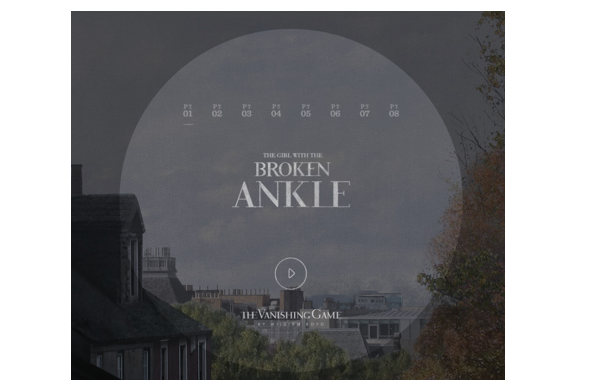Involving storytelling for B2B
Every day, b2b business workers receive a lot of emails, 90% of which are sent to the “Deleted” folder. The key to maintaining communication with the audience in the marketing noise is storytelling.
Many take b2b marketers for robots that make decisions and are set up only to achieve their business objectives. This is the wrong approach. It is necessary to use the method "Man to man", because it is the man who makes the final choice for the company, very often guided by his emotions. On this basis, storytelling is an effective decision maker.

The benefits of storytelling for B2B
')
1. Personalize
People do not like to read abstract texts. Tell a story on behalf of a person, indicating his name and surname. Such stories always evoke empathy, that is, empathy.
Make the narrator as similar as possible to his clients, with the same problems and experiences. This approach is ideal for an advertising company, where the main character will talk about the product or service, answering the questions of concern to buyers. Below is a vivid example of mailing, where the story is conducted on behalf of the cat, who was rescued by the company “Vokra”. He encourages animal lovers to donate money to the development of the organization.

2. Make a problem solving script
Take as a basis the fears, doubts and uncertainties of your customers, and show them how your product can solve these problems.

For example, a dermatologist in her video message shared with users the causes of acne and how to eliminate it.
3. Use the data
The highlight of your story can serve as clear data. They are aimed at customers with rational thinking and will be an additional argument to purchase your product.
Which of these examples sounds more convincing to you: "Security breaches are a serious problem for businesses today." Or “Did you know that 60% of security breaches occur in enterprises?”
In the second example there is the so-called “logical attractiveness”, there is a fact that will influence the decision to purchase.
4. Organize an exciting journey for readers
Tell the story of your brand so that the reader has the impression that he has gone this way with you. If your company is developing new technologies, then add to this “journey” a history of history, as well as short stories about the evolution of technology. Teach them!
Vivid examples of the history of the women's clothing "Nasty Gal" and the production of energy bars "Clif":


5. Gamification
After reading each story, ask readers easy questions about the content and give points for the answers. When a client collects a certain number of points, give comic medals, for example, “Experienced Chitaka” and tell about his achievements on the site. This will encourage you to read more stories and improve your metrics.
Create interactive videos or games, develop the game mindset of subscribers, which will help them in solving problems.

The company "Range Rover" has developed a game based on the story. And at "Mercedes-Benz" you can see the car interior with a detailed story about the characteristics that accompanies the video.

6. Break the rules
As the famous writer and playwright Bernard Shaw said, “The golden rule is that there are no rules.” Of course there are certain recommendations on how and what to write, but experiments are always welcome. Do not be afraid to do something of your own, unlike anything else and deviate from the rules. Perhaps with the help of this approach, your brand will be known to the whole world!

For example, the pharmaceutical and cosmetic company “Splat” went beyond the scope of its specialization and sent a message about relaxation. This is good advice for modern readers, since we are often in a rather fussy atmosphere and stress.
Take advantage of our storytelling tips and create your own exciting story now. Hurry up, this competitor has not used this method yet!
Many take b2b marketers for robots that make decisions and are set up only to achieve their business objectives. This is the wrong approach. It is necessary to use the method "Man to man", because it is the man who makes the final choice for the company, very often guided by his emotions. On this basis, storytelling is an effective decision maker.

The benefits of storytelling for B2B
')
- Causes chemical reactions in the body. Despite the huge number of diverse stories, they have a common feature - they all cause us emotions. And human emotions arise as a result of chemical reactions in the body. Neeroeconomist Paul Zak conducted a study which revealed that dramatic stories activate cartizol due to stress, and oxytocin due to sympathy.
- A new customer engagement tool that helps build strong relationships.
- It arouses the interest of discarding the facts and technical details, which are so many in B2B. A vivid story will hook the reader's perception without demanding facts.
- Improves reading statistics . The very mention of the story in the subject line of the letter will immediately increase the discovery. Subscribers have already formed certain psychological filters that protect them from the huge flow of email letters. Storytelling will easily bypass the available filters, as it is a new email marketing feature.
How to write an engaging story?
Storytelling formula: Idea + Hero + Projection + Structure + Connectivity + Style
- Each story is based on an idea .
- The hero is the driving force behind the story.
- The projection must be close to the real world. It should identify problems and show various ways to solve them.
- The story should evolve according to a predetermined structure . Readers and viewers expect events to follow a specific pattern, and you should guide them through your story in accordance with their expectations.
- One structure is not enough to create an exciting story. You need to be able to correctly link all the elements into a single product.
- The style of your presentation influences the perception of the story. He creates a general mood, and in the course of history it may change.
Our recommendations for writing an engaging story
1. Personalize
People do not like to read abstract texts. Tell a story on behalf of a person, indicating his name and surname. Such stories always evoke empathy, that is, empathy.
Make the narrator as similar as possible to his clients, with the same problems and experiences. This approach is ideal for an advertising company, where the main character will talk about the product or service, answering the questions of concern to buyers. Below is a vivid example of mailing, where the story is conducted on behalf of the cat, who was rescued by the company “Vokra”. He encourages animal lovers to donate money to the development of the organization.

2. Make a problem solving script
Take as a basis the fears, doubts and uncertainties of your customers, and show them how your product can solve these problems.

For example, a dermatologist in her video message shared with users the causes of acne and how to eliminate it.
3. Use the data
The highlight of your story can serve as clear data. They are aimed at customers with rational thinking and will be an additional argument to purchase your product.
Which of these examples sounds more convincing to you: "Security breaches are a serious problem for businesses today." Or “Did you know that 60% of security breaches occur in enterprises?”
In the second example there is the so-called “logical attractiveness”, there is a fact that will influence the decision to purchase.
4. Organize an exciting journey for readers
Tell the story of your brand so that the reader has the impression that he has gone this way with you. If your company is developing new technologies, then add to this “journey” a history of history, as well as short stories about the evolution of technology. Teach them!
Vivid examples of the history of the women's clothing "Nasty Gal" and the production of energy bars "Clif":


5. Gamification
After reading each story, ask readers easy questions about the content and give points for the answers. When a client collects a certain number of points, give comic medals, for example, “Experienced Chitaka” and tell about his achievements on the site. This will encourage you to read more stories and improve your metrics.
Create interactive videos or games, develop the game mindset of subscribers, which will help them in solving problems.

The company "Range Rover" has developed a game based on the story. And at "Mercedes-Benz" you can see the car interior with a detailed story about the characteristics that accompanies the video.

6. Break the rules
As the famous writer and playwright Bernard Shaw said, “The golden rule is that there are no rules.” Of course there are certain recommendations on how and what to write, but experiments are always welcome. Do not be afraid to do something of your own, unlike anything else and deviate from the rules. Perhaps with the help of this approach, your brand will be known to the whole world!

For example, the pharmaceutical and cosmetic company “Splat” went beyond the scope of its specialization and sent a message about relaxation. This is good advice for modern readers, since we are often in a rather fussy atmosphere and stress.
Take advantage of our storytelling tips and create your own exciting story now. Hurry up, this competitor has not used this method yet!
Source: https://habr.com/ru/post/297710/
All Articles